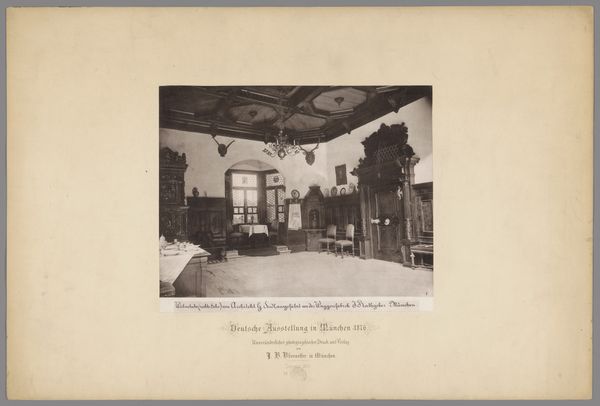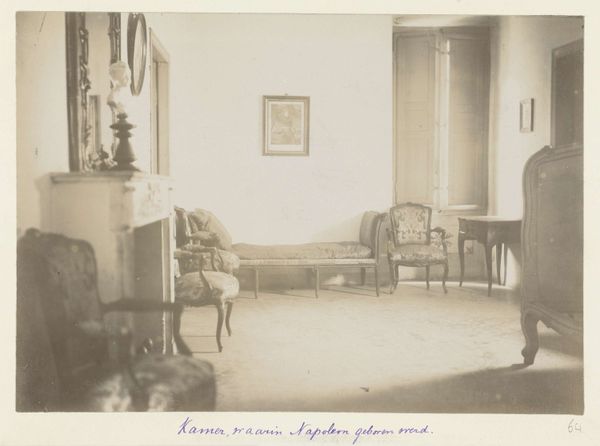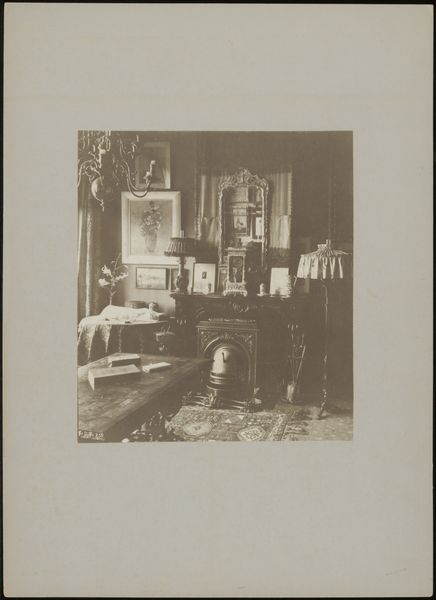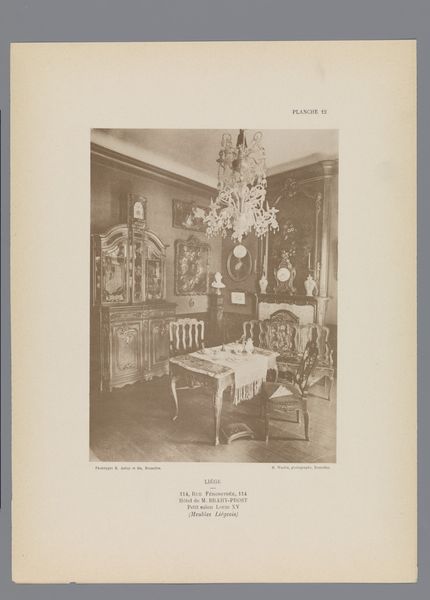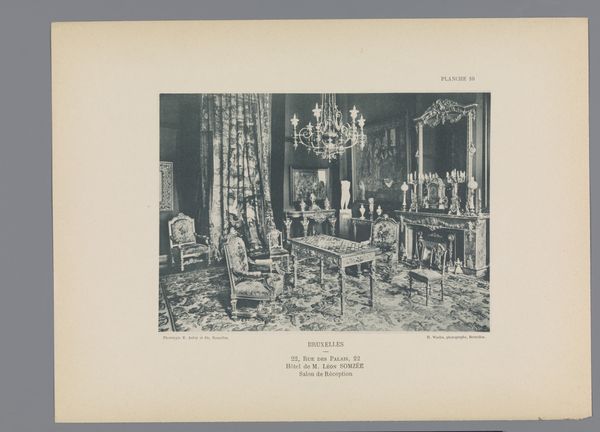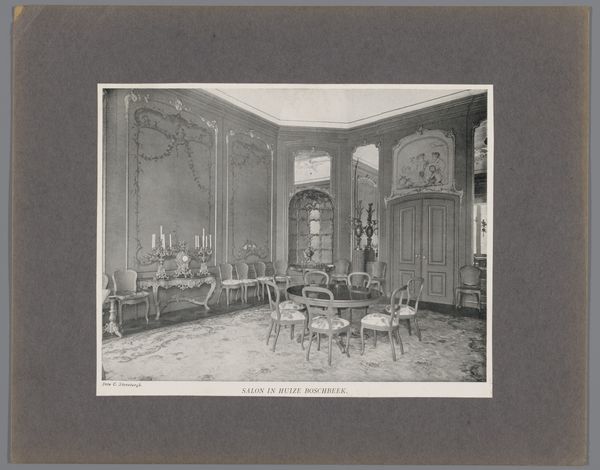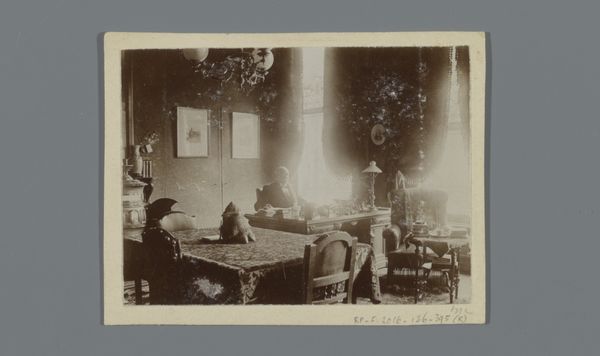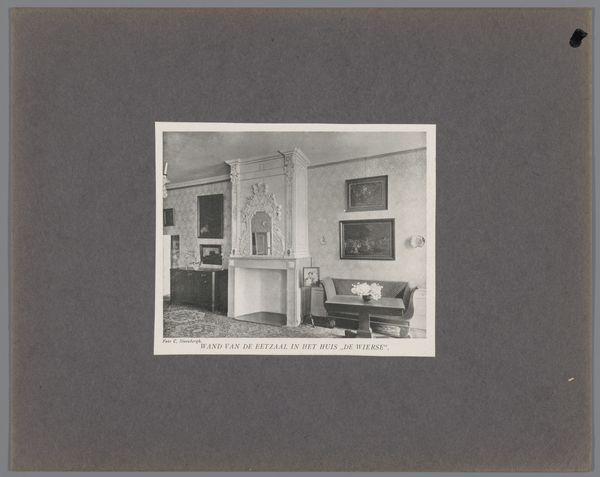
Groepsportret in een interieur van (v.l.n.r.) F.W. Emmerson, H.C. van der Zee, H. van Pouderoyen te Buchire 1897
0:00
0:00
photography, gelatin-silver-print
#
portrait
#
photography
#
group-portraits
#
orientalism
#
gelatin-silver-print
#
genre-painting
Dimensions: height 85 mm, width 108 mm
Copyright: Rijks Museum: Open Domain
Editor: This is a gelatin silver print from 1897 by Antoine Sevruguin. It’s a group portrait in an interior, seemingly of Europeans in Persia, and something about the setting feels both intimate and staged. What historical context should we be aware of when looking at this? Curator: The key thing to recognize is the visual construction of power inherent in Orientalist photography of the time. Sevruguin, while of mixed Armenian-Georgian heritage and based in Persia, catered largely to a Western clientele, producing images that reinforced European perceptions of the East. Notice the composition – the three European figures are sharply in focus, actively engaged in a toast, suggesting camaraderie and authority. In the background, partially obscured, there appears to be an indigenous figure almost as an extra in a theatre scene. Editor: So, the image, while seemingly a candid glimpse into a social gathering, is actually playing into pre-existing power dynamics? Curator: Precisely. Think about the intended audience. This photograph wouldn’t have been made for local consumption; it’s meant for export, reinforcing ideas of European superiority and colonial presence. The choice of subject matter, the staged intimacy against what would likely be perceived by Western eyes as an exotic backdrop, all contribute to a narrative of cultural dominance. What is most compelling about the location? Editor: It certainly creates a certain allure. You make me see it with fresh eyes, seeing through the superficial charm of the interior. Instead of a mere snapshot, it's a complex construction. Curator: And understanding that construction is crucial to unpacking the image's cultural significance. We often overlook how deeply entrenched colonial ideologies were in seemingly innocent images. Editor: This was fascinating! Now, I see so much more complexity within a simple portrait.
Comments
No comments
Be the first to comment and join the conversation on the ultimate creative platform.
